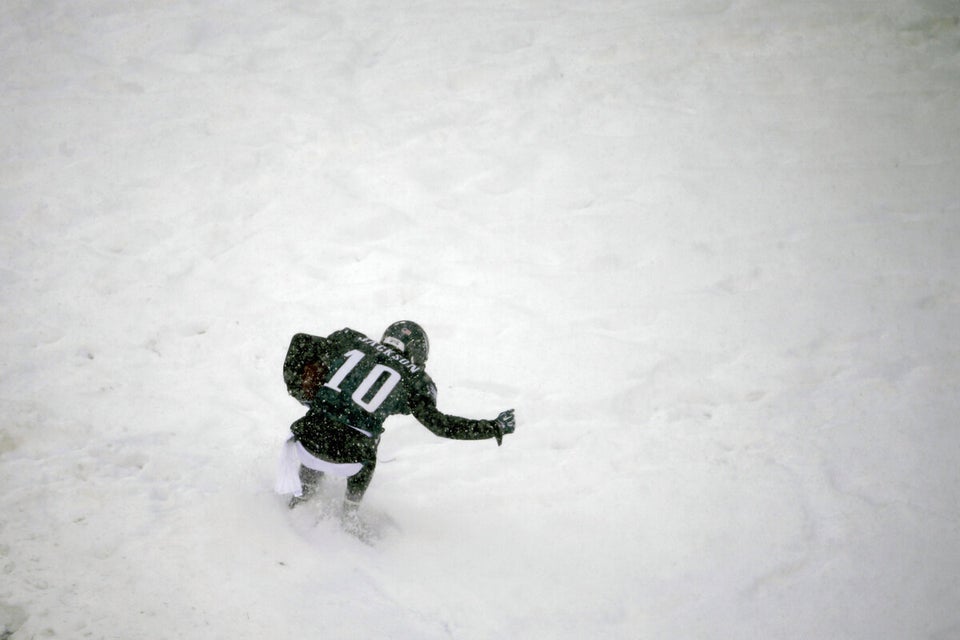Honestly, I don't know what I'm more tired of, and I don't know what exhausts me more: fighting in the National Hockey League, or the debate that has raged like a wildfire for as long as I can recall on the contentious issue of... fighting in the National Hockey League.
Consider the notable grey matter that has weighed in with considered opinions on this prickly matter in recent weeks alone:
Bobby Orr, one of the greatest hockey players in the storied history of the game, has been talking up the topic as he tours in support of his new memoir. For those keeping score at home, Orr is in favor of fighting, believing it to be a useful and necessary deterrent for non-skilled players who try to intimidate skilled players.
Ken Dryden, a Hall of Famer in his own right, whose fingerprints are all over the game in assorted capacities, wrote in Saturday's Globe and Mail that he respectfully thinks Orr is wrong. "Today's enforcers are also not like those in Orr's time. They are superheavyweights. They train with boxers...They know what they are doing. A fight's nightmare scenario is no longer a broken nose or a puffed-up eye. These enforcers' punches do damage."
And then there's Brian Burke, President of Hockey Operations for the Calgary Flames. Five days ago, Burke penned a guest column for USA Today in which he opined, like Orr, that "fighting is one of the mechanisms that regulates the levels of violence in our game," and that "players who break the rules are held accountable by other players." And that "eliminating fighting would render it (accountability) extinct." Burke admitted that this peer accountability system, which seems somewhat akin to the prison justice system -- wherein the inmates are left to police themselves -- is not perfect.
And, of course, it will seem all the more imperfect if one of these superheavyweight brawlers that Dryden discussed inflicts serious damage on an opponent -- ending a career or, nightmare realized, ending a life. Defenders of fighting say that's never happened before. Opponents of fighting say that by allowing brawlers to brawl, the league's playing a shortsighted game of Russian Roulette.
Whichever side of the debate you're on, you have to concede that Burke's insightful editorial was somewhat undermined by bad timing. Two days after the essay appeared, the Philadelphia Flyers, frustrated that the Washington Capitals were trouncing them, started a brawl that resulted in more than 100 penalty minutes being handed out. Flyer Steve Downie ended up in hospital with an orbital injury and concussion. Teammate Vincent Lecavalier suffered facial injuries. And the league got another black eye.
The shiner came in the form of an ugly and odious incident during the brawl -- like the brawl itself wasn't enough -- wherein Flyer netminder Ray Emery skated the length of the ice and began pounding Caps goalie Braden Holtby, who was an obviously unwilling participant, a guy who wanted no part in the proceedings. It was as one-side and inane as a hockey fight gets.
Well, sportscasters across North America were so outraged and repulsed by the Emery incident they played the footage over and over and over again just to demonstrate their level of outrage and repulsion. The footage was inescapable, every inch a Mixed Martial Arts melee -- only with one of the participants not participating. For his part, Emery received no supplemental suspension because apparently there's nothing in the rulebook the league could use as a precedent.
Really? No "for the good of the game" clause? No 20 games for tomfoolery, stupidity, playground bullying, or for just making the sport look bad? Following the incident, erudite editorialists came out of the woodwork in favor of banning fighting, which is a little like politicians coming out in favor of family values during an election year.
In his essay, Dryden concluded that fighting in the NHL will end "because its proponents will lose their will, get embarrassed, grow tired, and give up. It will end because it is too dangerous, or too laughable."
And who am I to disagree with Ken Dryden? I'm no one, that's who. Still, I (respectfully) disagree. Nothing changes; nothing will change. Fighting's going nowhere. Don Cherry will stop prefacing every comment he makes with "I gotta tell ya" before fighting is banned. Players will stop wearing protective cups. And arenas around the league will stop overcharging for beer.
Why?
Because it's fighting that puts the National Hockey League at the top of sportscasts -- in Canada, where hockey rules, and even in Sun Belt markets where hockey is barely an afterthought. An afterthought, that is, until there's an ugly incident. And then it's carnage. On ice. On repeat. And carnage, on ice, on repeat, never seems to embarrass a league that seemingly craves respect, while happily aligning itself with the likes of roller derby.
